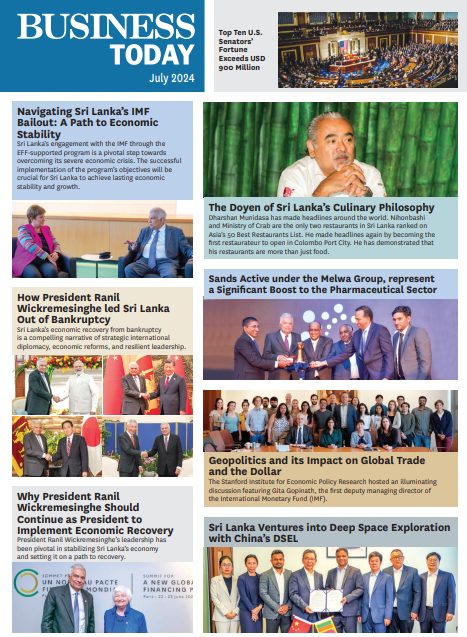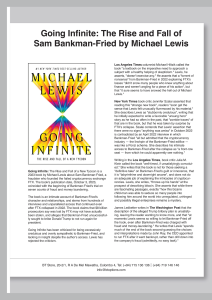Quality is the keyword which is frequently being echoed any in most organisations today, and the most successful organisations are those who have placed quality control at the heart of their management policy. ANGIE K’SINGHAM, outlines what quality control is all about and how one has to go about to get the ISO-9000 certification.
Even as Asia races after quality, each company in the region must follow its own direction. A company in pursuit of quality should tailor its quality efforts to reflect its own realities: its goals, customer requirements, culture and people”. (Rachel Salazar quoted in the World Executive’s Digest).
Setting corporate quality goals is becoming a high priority for survival in an increasingly competitive market place. It is also becoming an imperative requirement for companies which intend to break into quality conscious Western markets. The industries that get ahead and stay ahead are the ones that have placed quality at the heart of their management philosophy the ones who strive to anticipate and meet consumer expectations and demands consistently. “Planning should start with the customer, and the centrepiece of planning should be customer satisfaction”, says Willard 1 Zangwill in his article” Ten Mistakes CEO’s Make About Quality”.
If organisations want to succeed, the writing on the wall is clear deliver quality to the customer. The concept of quality is not one that is only applicable to western markets. In the new and sophisticated information age, it is one that is increasingly being sought after in the domestic market by a generation of people who are exposed to international trends and who aspire to a certain quality of life. Marketing strategies and advertising rationales that promise and don’t deliver are a thing of the past to this savvy, urban populace with high expectations.
The benefits of quality certification are enormous. As the Sri Lanka Standards Institution (SLSI) points out, companies stand to benefit through increased efficiency and productivity, reduction of waste and rejects, and world-wide recognition of quality standards. As the national certification body for the internationally recognised ISO 9000 certification, the SLSI has been spearheading a drive for awareness in this area. However, currently one of the problems faced by industries is the confusion as to what this set of systems and procedures mean.
Many managers wrongly believe that quality means physical verification and inspection of the final product to ensure that the ‘less than perfect’ product doesn’t slip through. Quality management personnel however say that inspection can eliminate 80% of the defects but 20% will still reach the consumer. The actual concept of quality management is however the complete antithesis of this method. The processes and procedures instituted ensure that the company has a consistent control on the standard of products manufactured, the ultimate goal being to eliminate the need for inspection and verification. ISO 9000 requires independent and objective evidence at all stages of a process right from raw material procurement to final delivery of goods and also requires that the entire operation is carried to agreed standards.
The evolution of ISO 9000 can be traced back to the 1950s when the demand for quality systems was first felt during the construction of the first nuclear submarines and power stations. The emphasis shifted in the 1960s to defining quality systems and charting procedures to ensure uniformity of quality in NATO procurements of military hardware. From there on the formulation of the ISO 9000 standards certification was only a step away. The defence standards were virtually adopted by the British Standards Institution in 1974. In 1987, International Standards for Quality Systems were published (ISO 9000 ISO 9004).
ISO 9000 – Quality Management and Quality Assurance Guideline for selection & use
ISO 9001 – Quality Systems Model for Quality Assurance in design development production installation and servicing
ISO 9002 – Quality Systems Model for quality assurance in production installation and servicing
ISO 9003 – Quality Systems Model for quality assurance in final inspection and test
ISO 9004 – Quality Management and Quality systems elements guidelines
ISO 9000 standards describe how an organisation can establish, document and maintain an effective quality system which ultimately will demonstrate to customers the organisation’s commitment to quality. It applies to the quality management system that an organisation has, not its product. To those organisations hoping to break into promising overseas markets, ISO 9000 certification is an entree of sorts. It provides the necessary assurance by a neutral third party that a company is following an internationally accepted quality standard in its manufacturing process.
Serendib Coconut Products Ltd., one of the first four companies to obtain ISO 9000 certification for its products in Sri Lanka through the SLSI. is a case in point. It is rightfully proud of the role it has played in firmly establishing Sri Lanka as a supplier of quality desiccated coconut to overseas clients. Serendib exports desiccated coconut to the UK. Holland, Germany, USA, Spain and Denmark. Among its buyers are multinationals like Mars, Cadburys and Kellogg’s. The Managing Director says, “The Company is capable of manufacturing desiccated coconut in a variety of grades in one of the most quality oriented operations of its kind in the world”. The Serendib quality production system has been built on ISO 9002 requirements. In order to ensure that both the environment and the product are free from contamination, frequent tests are carried out at critical control points identified through a Hazard Analysis Critical Control Point (HACCP) system. Quality assurance extends to periodical examinations and immunization of all employees.

Admittedly, new stringent EC regulations, harmonisation of standards and growing protectionism in global markets have helped bring Sri Lankan industries to the altar of quality. Emphasis on export-led growth has forced increasing numbers to seek accreditation in an attempt to break into the overseas market.
The trend is not merely local, but global. In Britain alone, some 22,000 organisations are in the process of obtaining quality certification. Since the 1980s, Europe has been working on acquiring that competitive edge called quality. In 1988, fourteen leading western European businesses formed the European Foundation for Quality Management (EFQM). The organisation’s objectives were to accelerate the acceptance of quality as a strategy for global competitive advantage and stimulate and assist the deployment of quality improvement activities. The fundamental rationale is that quality must and should be imbibed into the management culture of European organisations to meet the need of a new generation of consumers. In Singapore, a National Quality strategy was launched in 1993. Prime Minister Goh Chok Tong explained that “The strategy was designed to position Singapore as a location for high value-added investments and upgrade Singapore enterprises to world class standards”. In China, more than 500 export-oriented companies have achieved ISO 9000 certification.
In Sri Lanka, 9 companies have obtained certification in the two years since the scheme was launched by SLSI. A figure that is somewhat low, but one that nevertheless sets Sri Lanka ahead of its competitors in the region, with the exception of India, says Mr. Srilal de Silva, Director Quality Assurance SLSI and the lead auditor for the organisation.
Mr. De Silva says, “ISO 9000 certification should be mandatory for a company because it is a tool for development. One of the main drawbacks is that there is no compulsion for industries to work towards this goal unless it is for an overseas buyer or market. In most other countries large government tenderers require to conform to ISO 9000 certification as a prerequisite”. He also feels that the lack of a governmental initiative in this direction has retarded the drive for certification. Soon, those applying for Sri Lanka Standards Certification will be required to have a quality system in place.
SLSI is staffed by professional trainers, assessors and consultants and is one of the most experienced organisations providing services in this field. It has a network of international and local organisations assisting it in this area.
Certification proper can only be obtained through SLSI which applies the following guidelines to companies making the application:
■ The company has to submit a completed application form and pre-assessment questionnaire obtained from SLSI
■ SLSI evaluates the questionnaire and submits a report covering any improvement required. SLSI also requests a copy of the quality manual
■ SLSI carries out an adequacy audit and submits a detailed report
■ A trial assessment visit is arranged by SLSI to determine whether the documented system is adequate
■ SLSI assesses and evaluates the company’s quality system and the effectiveness of implementation
“… we should create, nurture and continually implement quality because it will ultimately increase value added exports“
■ SLSI grants certification if satisfied
■ SLSI conducts post-certification surveillance visits to ensure that the system is maintained.
■ SLSI renews the certification once in three years to ensure that the terms and conditions of the scheme are maintained
To introduce quality into an organisation requires change and change is something people resist because it upsets the comfortable and the familiar. Dr. Jack Small of IBM Corporation International who directs ISO 9000 activities for the organisation says, “One of the best ways to address change is to have a firm grasp of where the organisation is coming from….This enables an organisation to understand the nature of its business operations and gives it the courage to change. He goes on to recommend ISO 9000 as one of the best agents for identifying where an organisation is coming from.
However, setting up ISO certification requires specialised knowledge which most organisations do not have. The system requires the formulation of Quality manuals, etc., which can only be done by a professional. If so, the ideal solution is to use the services of a consultant or expert in the field. The Technology Initiative for the Private Sector (TIPS) provides the required expertise to companies by obtaining the services of certification. A recent programme was conducted for eleven Sri Lankan companies by TIPS in collaboration with the National Development Bank and SLSI. This programme partially funded by TIPS was designed to assist the companies in the run-up to applying for certification.
TIPS, a non-profit organisation “acts as a catalyst to facilitate prospective Sri Lankan companies to be introduced to the ISO 9000 programme”. TIPS provides grant funds to cover 50% of the programme costs, including the services of an outside consultant and other qualified activities.
Mr. Spencer T. King, CEO of TIPS, says in an article published in the Journal of the National Development Bank ‘Achievers’ that,…”the continuing spiral of quality, higher value-added exports is essential to Sri Lanka’s growth.” He further says “…I strongly recommend that we should create, nurture and continually implement quality because it will ultimately increase value-added exports. It will assist Sri Lanka to seize the opportunities to select and main- tain markets”. In this scenario, companies are seeing ISO 9000 certification as a must for development.
Obviously, the expertise Sri Lankan organisations need is available and at hand. The real challenge is to mobilise personnel within an organisation to work towards a transformation. A survey recently conducted by Organisation Dynamics Inc. revealed that nearly two-thirds of the respondents, all senior managers of Fortune Global 500 companies, believed that quality was the cornerstone of their organisation’s success. All indications are that quality will be the major determinant for Sri Lankan industries’ success or failure in the world market.






